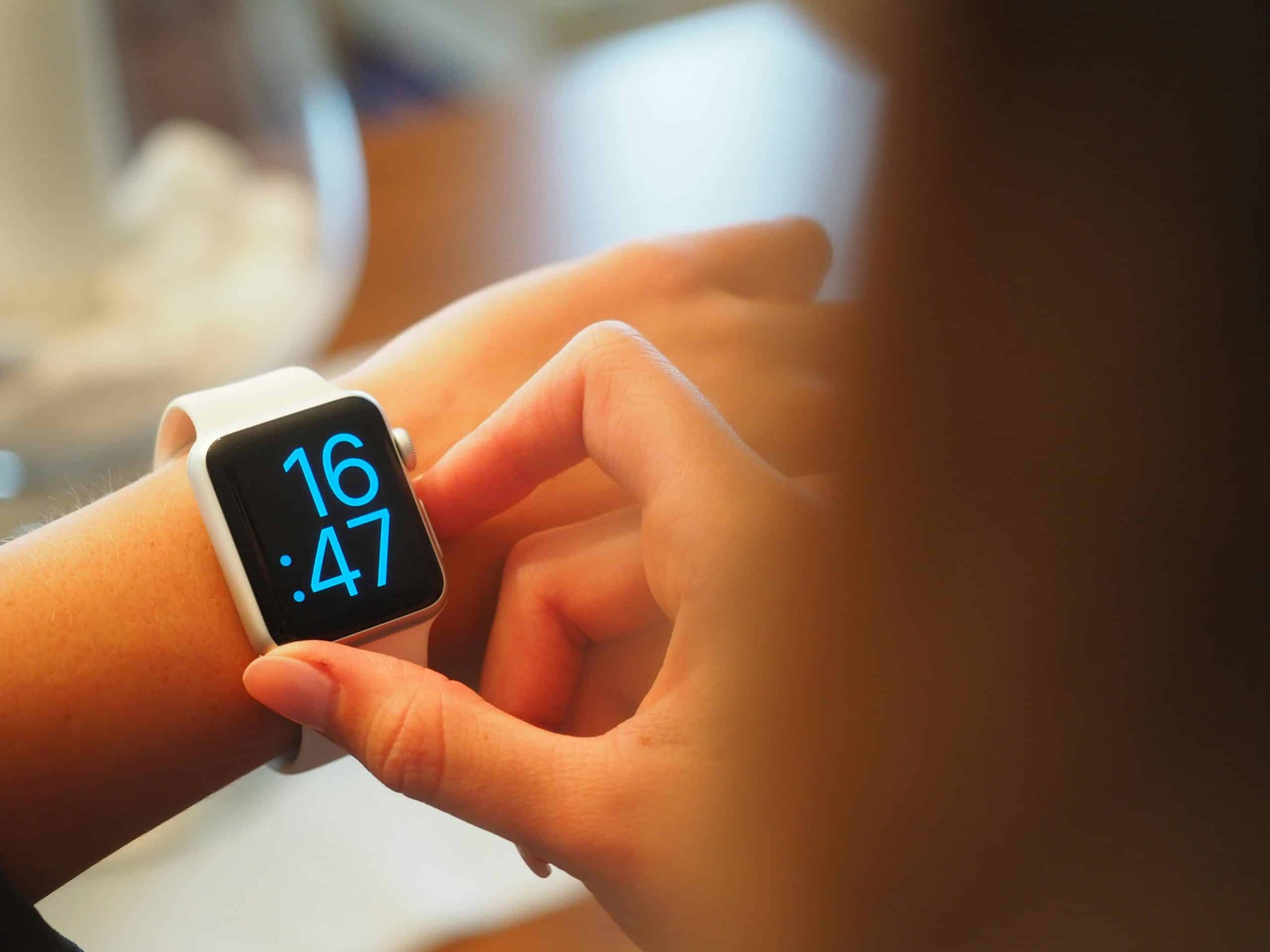Insights on wearable tech innovation shaping the future

Wearable technology enhances health management through real-time data, integration with smart environments, and advanced monitoring features, making it essential for proactive healthcare and personalized user experiences.
Insights on wearable tech innovation show us how these cutting-edge devices are more than just gadgets. Have you ever wondered how they change our daily lives? Let’s dive into the world of wearables and explore their fascinating benefits.
The evolution of wearable technology
The evolution of wearable technology has been nothing short of remarkable. From simple devices to complex systems, these technologies have transformed how we interact with our environment. Early wearables, like fitness trackers, set the stage for innovations that now include smartwatches and health-monitoring devices.
Major Milestones in Wearable Tech
Understanding the major milestones in the evolution of wearables helps us appreciate their impact. Here are a few key moments:
- The introduction of the first fitness tracker in the 2000s.
- The launch of smartwatches in the early 2010s.
- The rise of health monitoring features, such as heart rate and sleep tracking.
- The integration of wearable devices with AI for personalized experiences.
The growth of wearable tech is linked to advancements in technology and consumer demand for convenience. Developers continuously strive to create more sophisticated devices that cater to health, fitness, and lifestyle needs. For example, many current wearables can now analyze data and provide insights into personal health metrics.
Current Trends and Future Direction
Looking at current trends, we see a shift towards incorporating smart fabrics and embedded sensors. These innovations allow for seamless integration of technology with daily clothing, enhancing usability and comfort. With increasing focus on health, devices now monitor everything from stress levels to blood oxygen and more.
As we move forward, the potential for wearable technology seems limitless. New developments may lead us towards personalized health care right on our wrists. As such, keeping an eye on how these technologies develop will greatly benefit users looking to enhance their lifestyle.
Impact of wearables on healthcare

The impact of wearables on healthcare is profound and transformative. These devices are changing how both patients and healthcare providers approach medical care. With the ability to monitor health metrics in real-time, wearables offer insights that can lead to early intervention and improved health outcomes.
Benefits of Wearables in Healthcare
Many people are discovering the benefits that wearables provide in managing their health. Some key advantages include:
- Continuous health monitoring, which helps in tracking vital signs.
- Data collection that allows for personalized treatment plans based on individual needs.
- Increased patient engagement in their own health management.
- Early detection of potential health issues before they become severe.
By putting health management in the hands of users, wearables motivate individuals to adopt a healthier lifestyle. They enable users to keep track of their daily activities, sleep patterns, and even stress levels. This self-monitoring plays a significant role in preventive care.
Challenges of Integration
While the benefits are clear, integrating wearable technology into healthcare systems poses challenges. One issue is data privacy, which is paramount in healthcare. Ensuring that personal health information remains confidential is a top priority for developers and healthcare providers alike.
Additionally, interoperability is a significant challenge. Different devices and platforms may not communicate effectively with each other, leading to fragmented data. Solutions are being developed to bridge these gaps and create a more unified experience for users.
The future looks promising as continuous advancements in technology are paving the way for even smarter wearables. As these devices evolve, they hold the potential to revolutionize healthcare, making it more accessible, efficient, and personalized for everyone.
Key trends driving wearable device adoption
Key trends driving wearable device adoption are reshaping the landscape of personal technology. As more consumers recognize the benefits of these devices, the demand for innovative features continues to grow. This trend is evident in various segments, from fitness enthusiasts to those seeking better health management.
Health and Wellness Focus
One of the primary trends is an increased focus on health and wellness. Wearables that monitor heart rate, sleep patterns, and activity levels are becoming essential tools for many users. The goal is not only to stay fit but also to gain insights into personal health.
- Devices track important metrics like steps, calories burned, and sleep quality.
- Integration with health apps allows for a more comprehensive view of health data.
- Many wearables offer reminders to encourage healthier habits, such as staying active or hydrating.
This shift indicates that users are prioritizing their wellness and using technology to assist in their journey.
Technological Advances
Another significant trend is the rapid technological advancements seen in wearable devices. The incorporation of artificial intelligence and machine learning has led to smarter, more responsive wearables. This technology allows for personalized user experiences.
Additionally, innovations in battery life, accuracy, and design make it easier and more convenient for users to integrate wearables into their daily lives. With each iteration, devices become sleeker and more user-friendly. As new features are introduced, adoption rates continue to rise.
Social influences play a key role as well. As celebrities and influencers endorse these products, they create a buzz that captures attention. The trend helps normalize the use of wearable technology, making it an attractive option for more consumers.
Looking ahead, the future of wearable device adoption looks promising as trends evolve. As society becomes increasingly health-conscious and technology progresses, wearables will likely play a significant role in how we manage our lives.
Future possibilities in wearable tech

The future possibilities in wearable tech are exciting and full of potential. As technology advances, we can expect wearables to become more integrated into our daily lives. New features and applications are being developed, aiming to enhance how we interact with technology and monitor our health.
Integration with Smart Environments
One major possibility is the integration of wearable devices with smart home environments. Imagine wearing a device that can control your home’s lighting, temperature, and security systems just by using voice commands or gestures. This seamless connection between wearables and smart devices will create a more cohesive living experience.
- Wearables could trigger actions in smart devices, enhancing daily comfort and energy efficiency.
- Health data from wearables may adjust settings in smart environments for optimal living conditions.
- Personalized settings based on user preferences may become commonplace.
This interconnectivity will make technology feel more intuitive and user-friendly, helping individuals lead more comfortable lives.
Advancements in Health Monitoring
Another exciting future trend is the advancement of health monitoring features. Future wearables may include more advanced sensors, allowing for continuous health tracking that goes beyond simple fitness metrics. By monitoring blood glucose levels, hydration status, or even mental health indicators, these devices could provide valuable insights.
The ability to collect and analyze this data will empower users to make informed health decisions. Users may receive alerts if their metrics go outside normal ranges, guiding them to seek medical advice promptly. This could lead to a shift toward proactive healthcare, where prevention is prioritized.
Additionally, wearables might evolve to allow remote health consultations via video through integrated features. This could provide users with immediate access to their healthcare providers regardless of location, making healthcare more accessible.
As we embrace technological advancements, the combination of wearable technology and health monitoring promises to pioneer new pathways in personal health management. With these developments on the horizon, the future of wearables is poised to be innovative and transformative.
The future of wearable technology is bright and full of exciting possibilities. As we explore the new trends in health and wellness, we see how these devices are set to change our lives for the better. By integrating with smart environments and offering advanced health monitoring, wearables can provide valuable insights into our daily activities and health metrics. As technology evolves, wearables will become central to how we manage our health, making it easier to lead healthier lives. With the continuous growth in this field, we can expect even greater innovations ahead.
FAQ – Frequently Asked Questions about Wearable Technology
How can wearables improve my health management?
Wearables provide real-time health data, helping you track fitness, sleep, and vital signs for better health decisions.
What are the benefits of integrating wearables with smart homes?
Integration allows you to control smart devices easily and create a more comfortable living environment tailored to your preferences.
Will wearables replace traditional health monitoring?
While wearables complement traditional methods, they offer continuous data that can enhance overall health management and prevent issues.
What should I consider when choosing a wearable device?
Look for features that match your lifestyle, such as health tracking capabilities, battery life, comfort, and compatibility with other devices.






